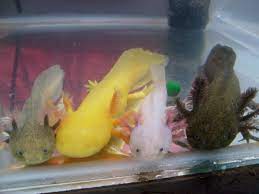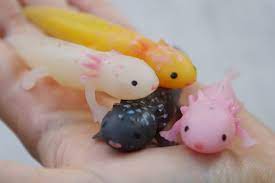
As of 2020, the axolotl was near extinction due to urbanization in Mexico City and consequent water pollution, as well as the introduction of invasive species such as tilapia and perch. It is listed as critically endangered in the wild, with a decreasing population of around 50 to 1,000 adult individuals, by the International Union for Conservation of Nature and Natural Resources (IUCN) and is listed under Appendix II of the Convention on International Trade in Endangered Species (CITES).
Axolotls are used extensively in scientific research due to their ability to regenerate limbs, gills and parts of their eyes and brains Further research has been conducted to examine their heart as a model of human single ventricle and excessive trabeculation. Axolotls were also sold as food in Mexican markets and were a staple in the Aztec diet.

